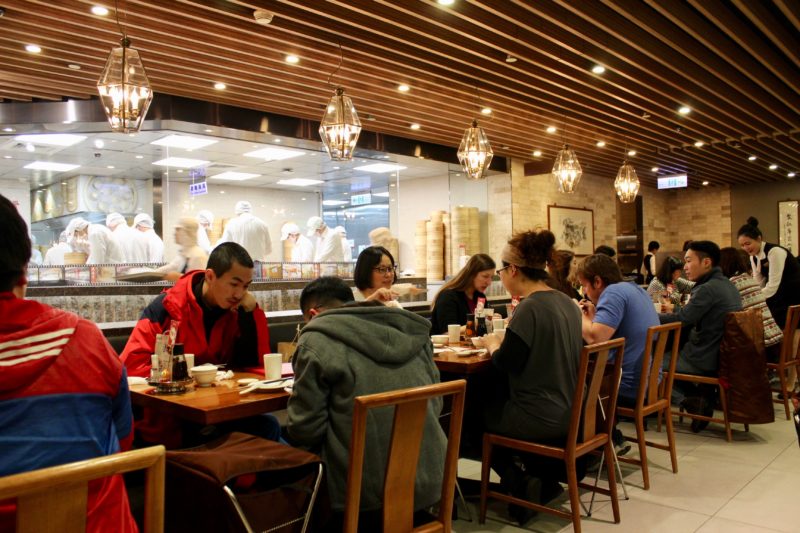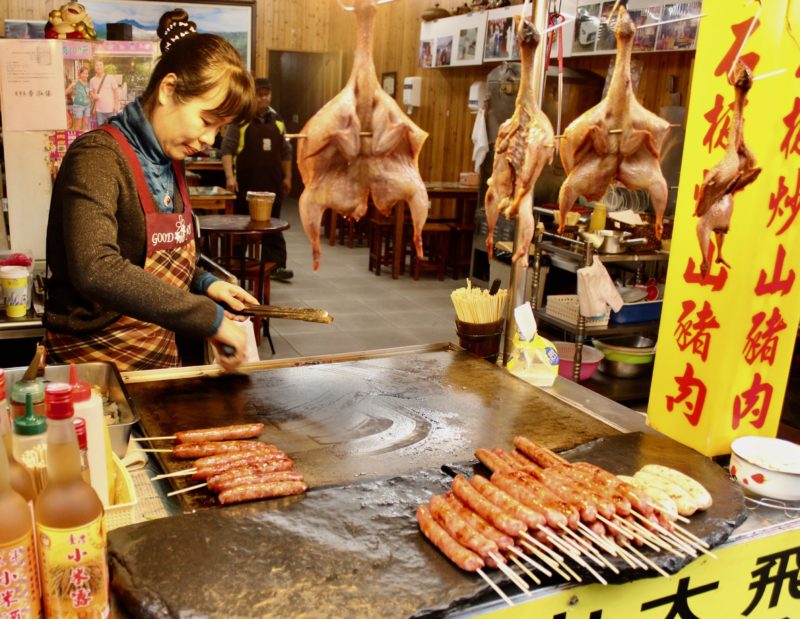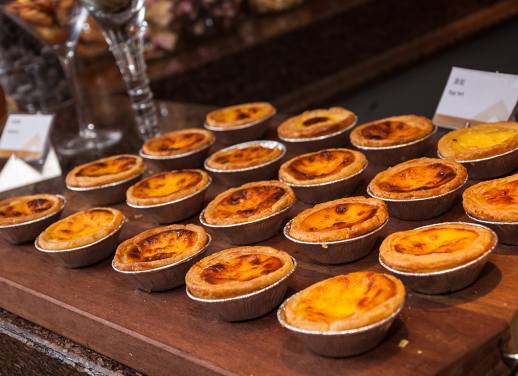Food in Taiwan is a national obsession. With night markets that rival Singapore’s, hole-in-the-wall eateries serving traditional specialties, and restaurants in every price range, it’s no wonder the locals are always eating.
If you want to join them, you’ll need a sense of adventure and a love of garlic!
Featuring a melting pot of food cultures from Chinese to Japanese to Portuguese and more, the culinary scene is a highlight of any visit to Taiwan. After nearly a month spent sampling my way around the island like a kid at a buffet, I’ve picked out nine dishes you should definitely try there:
Beef noodle soup (niú ròu miàn)
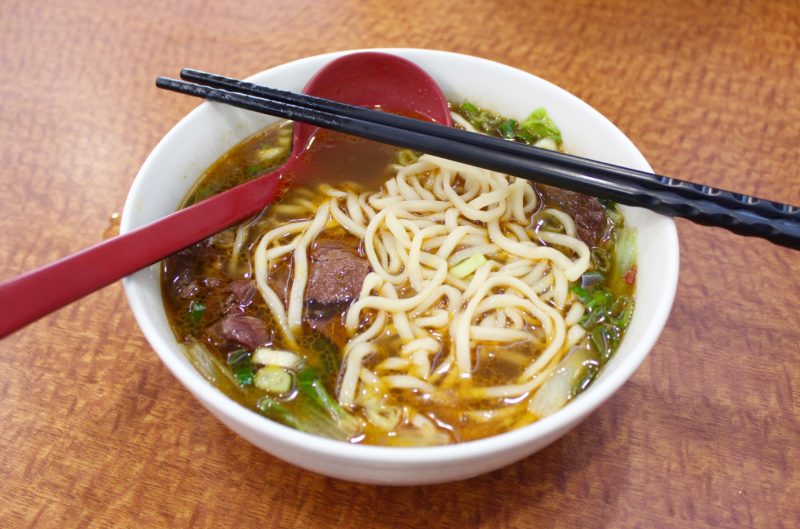 A comfort food found all over Taiwan, beef noodle soup comes in either a spicy or mild broth. More than a soup, it’s actually a meal in itself. There is also a dry version, which is simply called “beef noodle”. As the name implies, the dish is composed mainly of noodles and beef (stewed or red braised), as well as vegetables such as cabbage and the ever-present scallions.
A comfort food found all over Taiwan, beef noodle soup comes in either a spicy or mild broth. More than a soup, it’s actually a meal in itself. There is also a dry version, which is simply called “beef noodle”. As the name implies, the dish is composed mainly of noodles and beef (stewed or red braised), as well as vegetables such as cabbage and the ever-present scallions.
Many local restaurants specialize in beef noodle soup, but be careful if you can’t read the menu. Although the dish is usually made from beef shank, some variations may include tripe and tendon.
EAT YOUR WAY THROUGH TAIWAN ON THIS DELICIOUS 8-DAY FOOD TRIP
Steamed pork bun (guà bāo)
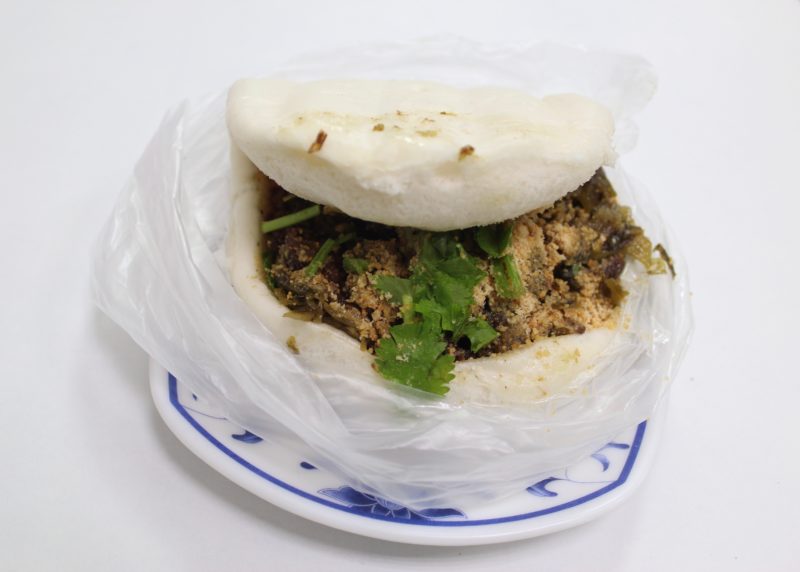 Also referred to as a “Taiwanese hamburger”, a gua bao consists of a soft steamed bun filled with pork, pickled cabbage, peanut powder and coriander. The pork comes in different combinations of fat meat and lean meat, with half-and-half being a popular version. At least that’s what the waiter at Lan Jia (3, Alley 8, Lane 316, Roosevelt Road, section 3) told me.
Also referred to as a “Taiwanese hamburger”, a gua bao consists of a soft steamed bun filled with pork, pickled cabbage, peanut powder and coriander. The pork comes in different combinations of fat meat and lean meat, with half-and-half being a popular version. At least that’s what the waiter at Lan Jia (3, Alley 8, Lane 316, Roosevelt Road, section 3) told me.
This Taipei restaurant (on an alley off a lane near the Gongguan MRT station) is not easy to find, but it is widely regarded as having the best gua bao in Taiwan, which is why I sought it out.
I found out the hard way that you should eat the sandwich while holding it in the plastic bag. If you don’t, it will fall apart. I ended up eating mine with chopsticks!
READ MORE: WHY TAIWAN SHOULD BE AT THE TOP OF YOUR BUCKET LIST
Shrimp rolls (xiā juǎn)
Shrimps rolls are a specialty of Tainan, a city in the southwest of Taiwan. They are made from shrimps and green onions, rolled in batter and deep fried, then served with ginger and a dipping sauce. Be warned: they can be very addictive!
If you can’t travel to Tainan to enjoy this popular snack food, try Fuchen Food at No. 8-1 Yongkang Street in Taipei, which specializes in traditional South Taiwanese dishes.
Soup dumplings (xiǎo lóng bāo)
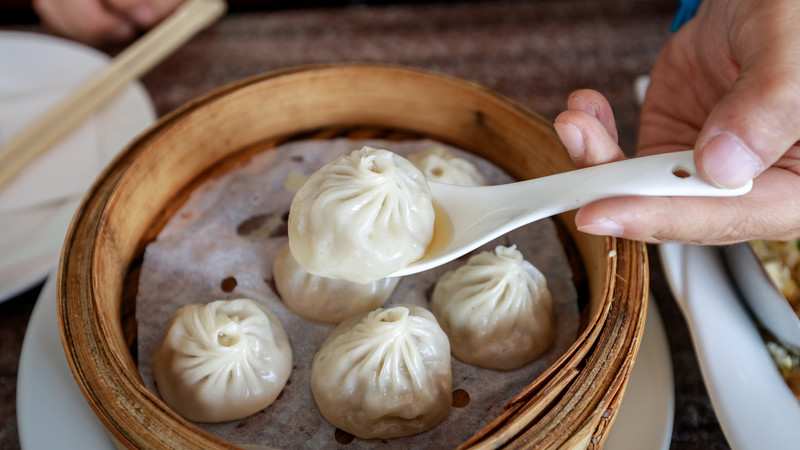 You cannot leave Taiwan without indulging in xiao long bao, a dumpling filled with pork, shrimps, and/or vegetables as well as gelatinized meat stock, which turns into a delicious broth when the dumpling is steamed.
You cannot leave Taiwan without indulging in xiao long bao, a dumpling filled with pork, shrimps, and/or vegetables as well as gelatinized meat stock, which turns into a delicious broth when the dumpling is steamed.
The Din Tai Fung restaurant chain, whose branches can be found in Taiwanese cities and increasingly the world at large, might be the reason for its popularity. Despite constant lineups and a wait of at least half an hour, these restaurants are well set up for visitors. A multilingual card even instructs you on the proper way to eat a soup dumpling.
Grab it with your chopsticks and dip it into a mixture of soy sauce and vinegar. Next, place it on a spoon and poke a hole to let the steam escape while the spoon catches the broth. Finally, add some shredded ginger on top, and plop it into your mouth (carefully, it’s still hot).
Taiwanese sausage (xiāng cháng)
In much of Asia, the term “sausage” simply refers to a bland hot dog, but a Taiwanese sausage is “oh so different”! Fatty and slightly sweet, it is typically made of pork and served with raw garlic.
A popular street food, you will find it in night markets as well as some restaurants. Don’t be surprised if you planned on eating just one and end up ordering two, as I did. I bought mine from a small restaurant in the village of Itashao on the shore of Sun Moon Lake.
 Shāo bǐng
Shāo bǐng
Shao bing is a flat bread (with or without sesame seeds), which forms the basis of the traditional Taiwanese breakfast. It comes filled with a long deep-fried “donut” (similar to a Mexican churros) and possibly an egg as well. A bowl of soymilk, with optional toppings such as scallions, accompanies the dish.
The whole thing is warming and ridiculously filling. I couldn’t finish mine. In Taipei, the most famous place to try shao bing (and other Taiwanese breakfast specialties) is Fuhang Soy Milk, on the second floor of the Hushan Market (108 Zhongxiao E Road, section 1). You will recognize it by the long line snaking down the stairs. Fortunately, it moves quickly.
CHECK OUT INTREPID’S TRIPS IN INCREDIBLE TAIWAN
Taro balls (yù yuán)
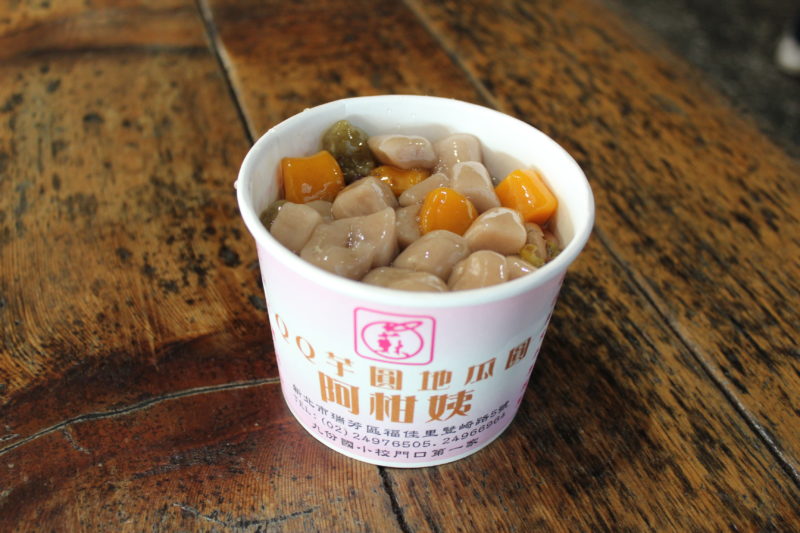 A specialty of the Jiufen area, taro balls are a sweet concoction, which is considered a dessert. The combo version (which I chose) consists of a combination of chewy taro, sweet potato, and green tea rice balls, mixed with red beans, green beans, and a sweet syrup.
A specialty of the Jiufen area, taro balls are a sweet concoction, which is considered a dessert. The combo version (which I chose) consists of a combination of chewy taro, sweet potato, and green tea rice balls, mixed with red beans, green beans, and a sweet syrup.
You can eat it hot, as a kind of soup, or cold, on top of shaved ice. The taste is not very strong, but the combination of textures is interesting.
You will find a few shops serving it as you walk the narrow alleys in the scenic village of Jiufen. Other places sell it too, but the Jiufen version apparently has a unique taste.
SUBSCRIBE TO INTREPID’S NEWSLETTER FOR TRAVEL TIPS, COMPETITIONS, GIVEAWAYS & MORE
Milkfish (shī mù yú)
Milkfish is a mild white fish that can be pan-fried, added to congee porridge, prepared as fish ball soup, or braised.
Try pan-fried milkfish at Ban Jiushi, an elegant teahouse that serves modern Taiwanese cuisine made from local produce, from locations in Taipei, Kaohsiung and Taichung.
At the Kaohsiung location (71 Zhongzheng 4th Road), a peaceful restaurant with dim lighting, the milkfish was part of a set that also included rice, small dishes of various vegetables, peanuts, and tea, one of my most enjoyable Taiwanese meals.
Oyster omelet (hé zǎi jiān)
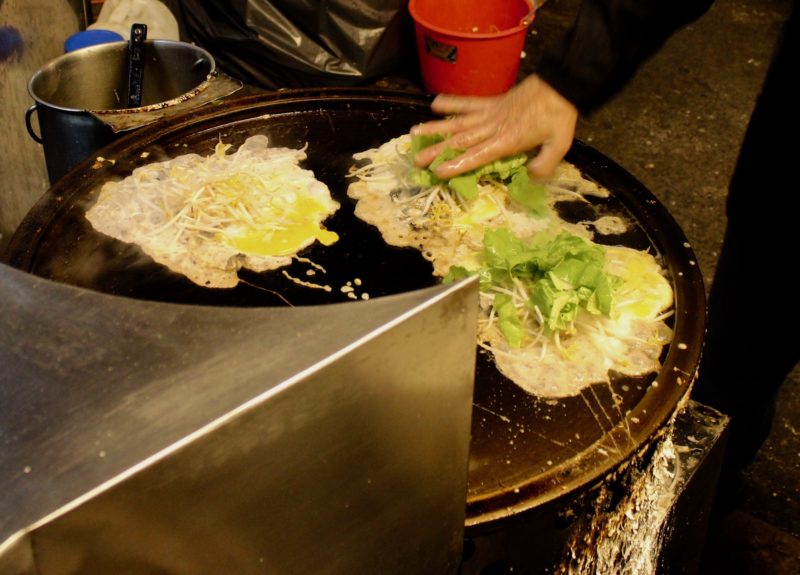 You will find oyster omelets at night markets across the country. Watch for stalls with a large cooking plate, piles of eggs, and a bowl of fresh oysters.
You will find oyster omelets at night markets across the country. Watch for stalls with a large cooking plate, piles of eggs, and a bowl of fresh oysters.
Besides those two main ingredients, the cook also adds lettuce and bean sprouts during the fry up. A generous serving of a syrupy red sauce accompanies the omelet. Locals like to douse the dish in it, but you can add as little or as much as you want. Despite its fiery color, the sauce is not spicy.
ANOTHER REASON TO VISIT TAIWAN: THESE 5 BEAUTIFUL NATURAL WONDERS
A few final foodie things to note
Few people in Taiwan speak English (especially outside of Taipei) and restaurants normally do not display their names in English. Some of the best food places are tucked away on small lanes off the main streets. This can make finding a specific restaurant or food tricky if you don’t have a guide and don’t know Mandarin.
Many eateries provide an English menu or illustrations to guide you. Yet, ordering food in Taiwan can be more trial and error, and you’ll need a sense of adventure to fully enjoy the culinary scene.
These nine dishes should provide a good starting point for your food explorations in Taiwan. Other foods you could try – if you dare – are stinky tofu, pork blood cake, and tea eggs!
Ready for the culinary adventure of a lifetime? Check out Intrepid’s 8-day Taiwan Real Food Adventure.
—
(Image credits from top to bottom: Intrepid Travel, Marie-France Roy x2, Intrepid Travel, Marie-France Roy x4, Intrepid Travel.)


